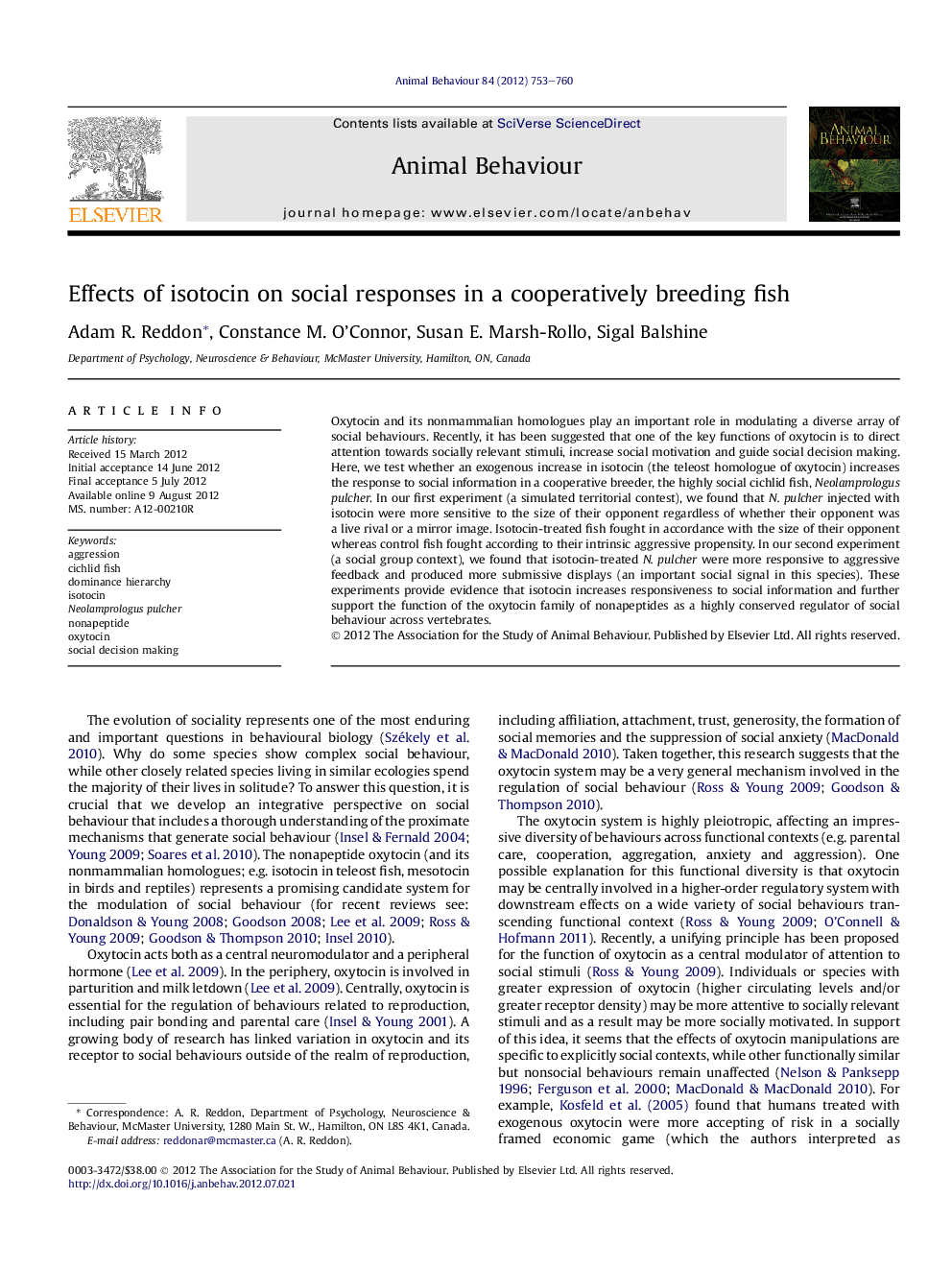| Article ID | Journal | Published Year | Pages | File Type |
|---|---|---|---|---|
| 2416512 | Animal Behaviour | 2012 | 8 Pages |
Oxytocin and its nonmammalian homologues play an important role in modulating a diverse array of social behaviours. Recently, it has been suggested that one of the key functions of oxytocin is to direct attention towards socially relevant stimuli, increase social motivation and guide social decision making. Here, we test whether an exogenous increase in isotocin (the teleost homologue of oxytocin) increases the response to social information in a cooperative breeder, the highly social cichlid fish, Neolamprologus pulcher. In our first experiment (a simulated territorial contest), we found that N. pulcher injected with isotocin were more sensitive to the size of their opponent regardless of whether their opponent was a live rival or a mirror image. Isotocin-treated fish fought in accordance with the size of their opponent whereas control fish fought according to their intrinsic aggressive propensity. In our second experiment (a social group context), we found that isotocin-treated N. pulcher were more responsive to aggressive feedback and produced more submissive displays (an important social signal in this species). These experiments provide evidence that isotocin increases responsiveness to social information and further support the function of the oxytocin family of nonapeptides as a highly conserved regulator of social behaviour across vertebrates.
► Oxytocin and its homologues (isotocin in teleost fish) modulate social behaviour. ► Isotocin levels were manipulated in a pair of blind experiments. ► Exogenous isotocin increased response to opponent characteristics during contests. ► Exogenous isotocin increased submissive displays in response to dominants.
